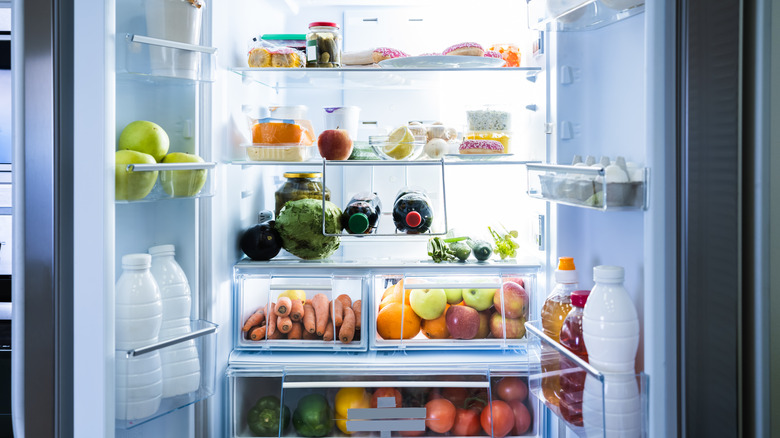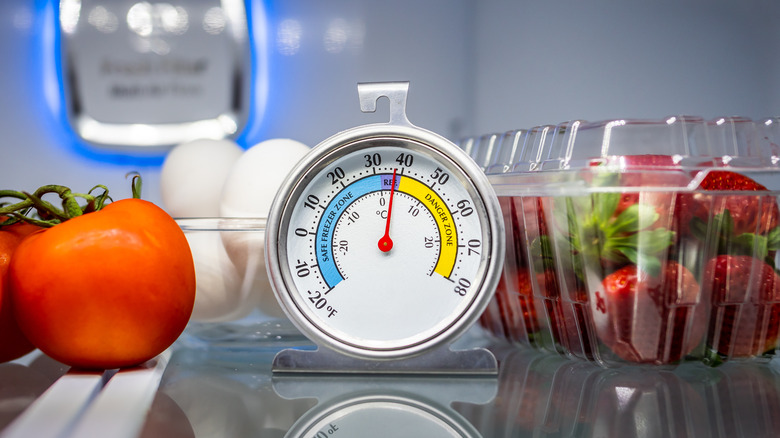The Refrigeration Safety Tip You May Be Overlooking
If you've ever spent a period huddled over the porcelain god (or worse, in the emergency room) thanks to a bout of food poisoning, you're well aware of just how important food safety is. Thanks to modern inventions such as our reliable refrigerator, foods that would normally have your belly in a twist within a matter of hours at room temperature can be enjoyed for up to months (or possibly longer if you're a condiment hoarder).
In the world of food safety, there is something called the "Danger Zone." This ominous-sounding moniker simply refers to a temperature range that falls between 40 degrees Fahrenheit and 140 degrees Fahrenheit. This is the area the FDA designates as ripe for bacteria to multiply and potentially cause foodborne illnesses — anything colder than 40 degrees or hotter than 140 degrees will substantially slow the growth of this bacteria.
While you might remember to clean out your fridge regularly, do you check its temperature? Ensuring that your trusty ice box is staying cold is a vital but often overlooked part of food safety. Here's the proper way to keep your fridge outside the perilous "Danger Zone."
Don't rely on the dial
Refrigerators come straight off the factory line set to maintain a temperature below 40 degrees Fahrenheit in the main part of the fridge with the optimal temp being 37 degrees. However, as the appliance ages, it may become more difficult to maintain. Different areas of the fridge may develop hot and cool spots that stay at different temperatures which renders the built-in dial or thermometer unreliable.
To counteract this inconsistency, get your hands on an external thermometer and check the temperature of your fridge about every three months. Make sure to let your thermometer sit in various sections of your fridge, checking every nook and cranny of the shelves and drawers to ensure that the temperature remains below 40 degrees Fahrenheit throughout the entire appliance.
Another tip to help keep your fridge chilled is to allow recently cooked foods to cool before adding them. Putting something hot from the oven directly onto the shelf of your refrigerator can raise the overall temperature of your fridge right into the danger zone, thus putting its contents in the sweet spot for bacteria growth. For the same reason, it's prudent to not overstuff your fridge. Too many items can prevent proper airflow, and like a small room packed full of people, more items to keep cool means more work for your fridge and possibly a higher internal temperature as a result. So don't overstuff your fridge, but do add an external thermometer.

